According to the USDA’s MyPlate guidelines, fruits and vegetables should make up roughly half of your plate at mealtimes. That means there are ample opportunities to load up on seasonal produce for plenty of vitamins, nutrients and fiber. During the fall, certain fruits and vegetables hit their peak, so head for your local grocery store or farmers market and fill a basket with the season’s bounty.
To assist with that endeavor, Leslie Bonci, RD, a sports dietitian and owner of Active Eating Advice, shares 10 recommendations for seasonal fruits and veggies to eat this fall.
FALL FRUITS
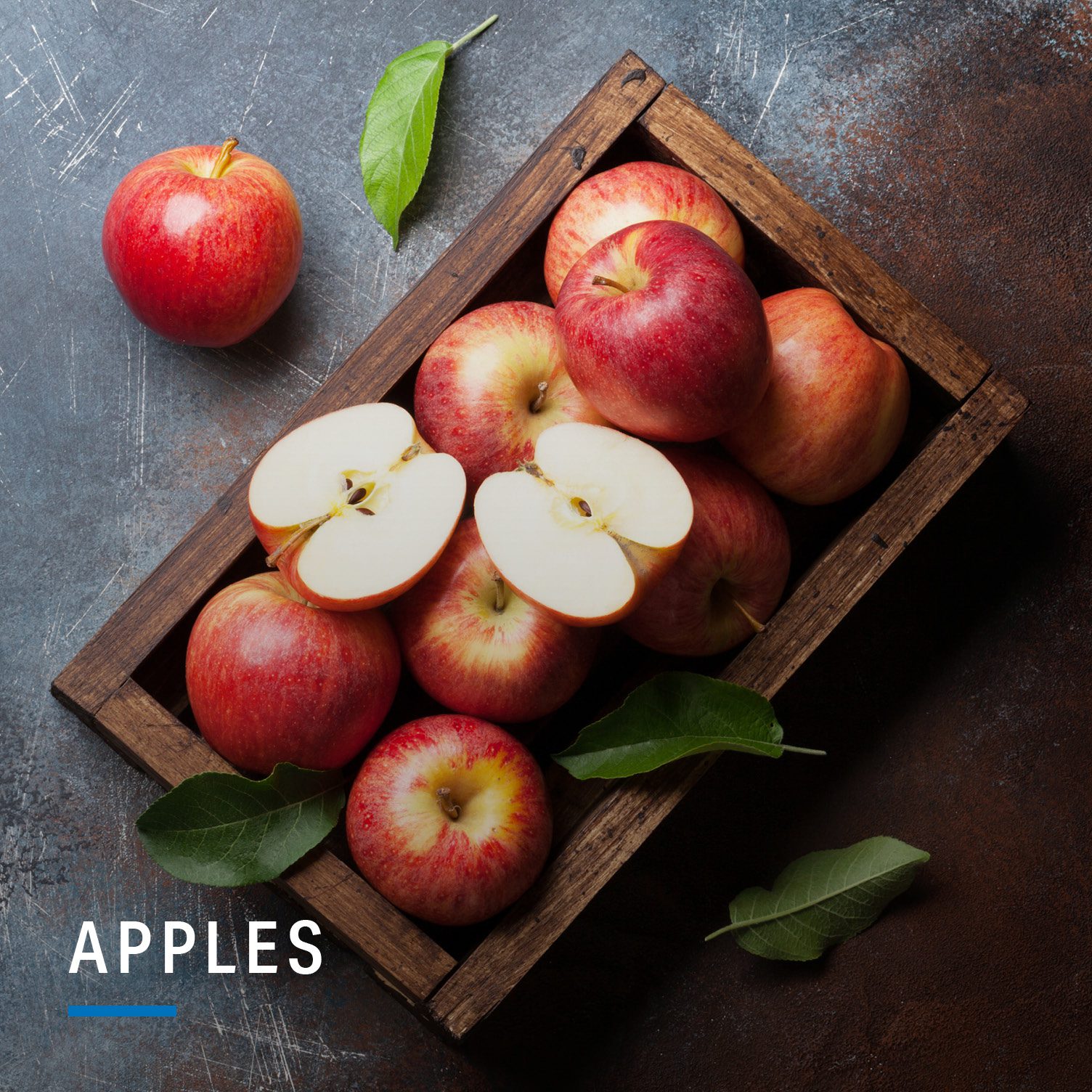
There’s not much better than a crisp, delicious apple. Bonci says you can’t go wrong with eating them just as they are, but if you want to jazz things up, add apples to salads and charcuterie boards, or try making a healthy dessert, like apple s’mores. Slice the fruit, spread the slices with ricotta, drizzle a little maple syrup on top, and finish with a sprinkle of candied pecans.
When picking apples, press the skin with your fingers to ensure it’s firm. Skip anything that feels soft to the touch.
Nutrition: 1 medium apple has about 95 calories and 25 grams of carbs.
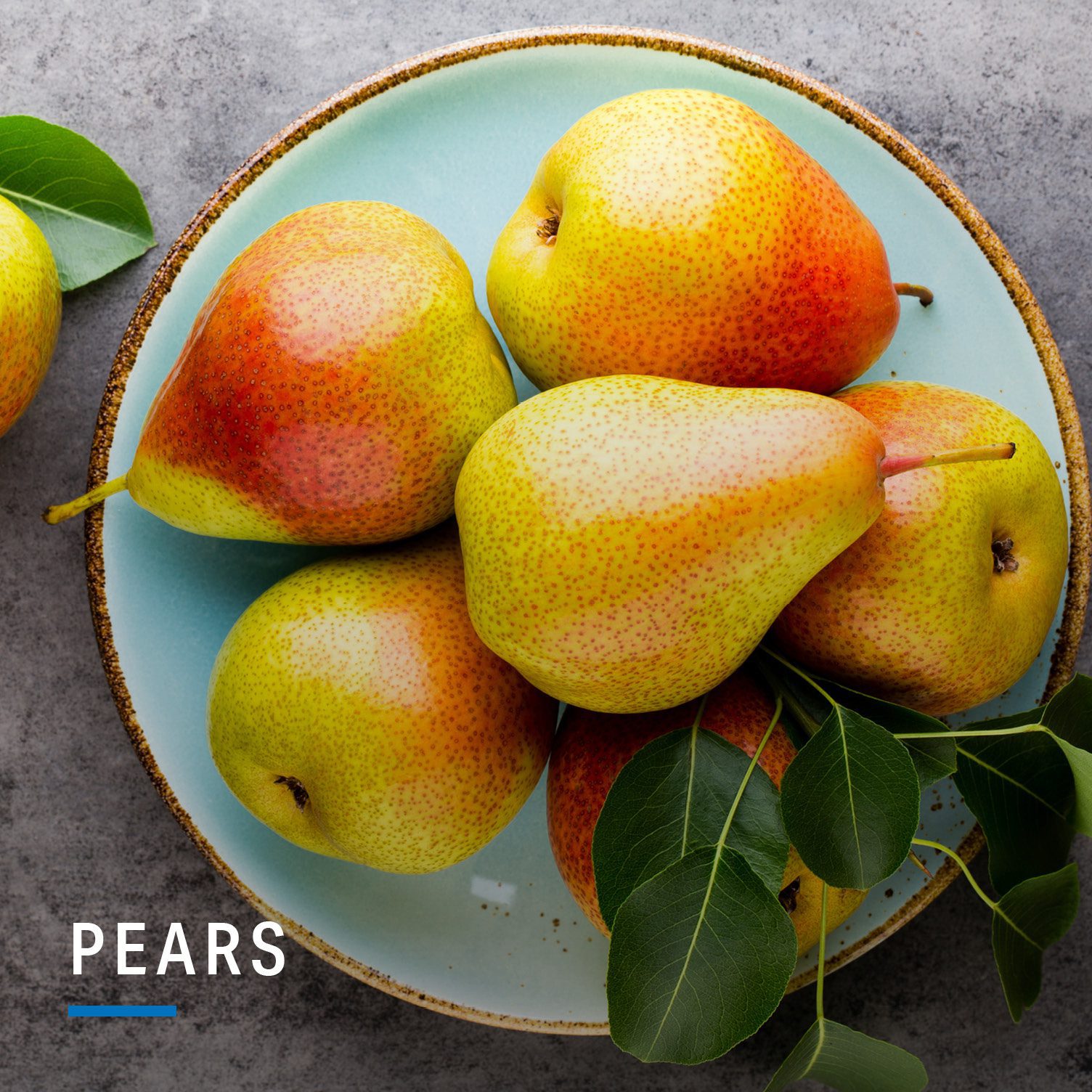
Pears come in several varieties, including Anju, Bartlett and Bosc. Bonci is partial to red-skinned pears but notes that all taste great. If you find a juicy pear, dive right in, or slice it for a pear and fennel salad with a simple dressing of olive oil and fig-balsamic.
Choose pears that have a little give at the top of the fruit near the stem. That indicates it’s ripe, but softness on the body of the fruit may indicate it’s past its prime.
Nutrition: 1 medium pear has about 100 calories and 25 grams of carbs.
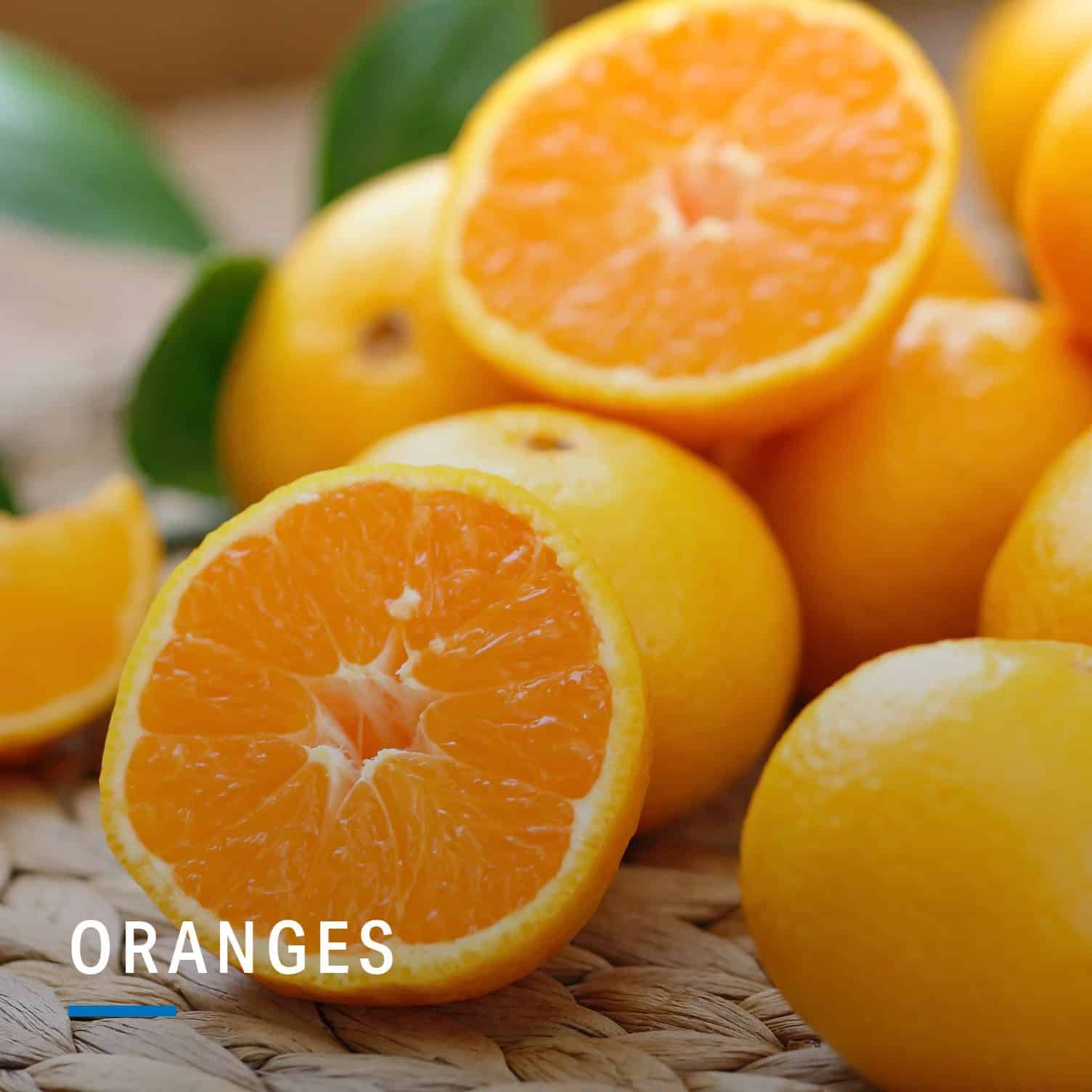
When in doubt, just eat the orange whole for a juicy, delicious treat that leaves the fiber intact. “Grated orange zest is my X-factor in recipes, but orange segments mixed into a spinach and cranberry salad are gorgeous,” says Bonci.
Look for oranges that are firm, brightly colored and fragrant. Smooth, thin-skinned fruits are better than those with thick or bumpy skin.
Nutrition: 1 medium orange has about 50 calories and 12 grams of carbs.
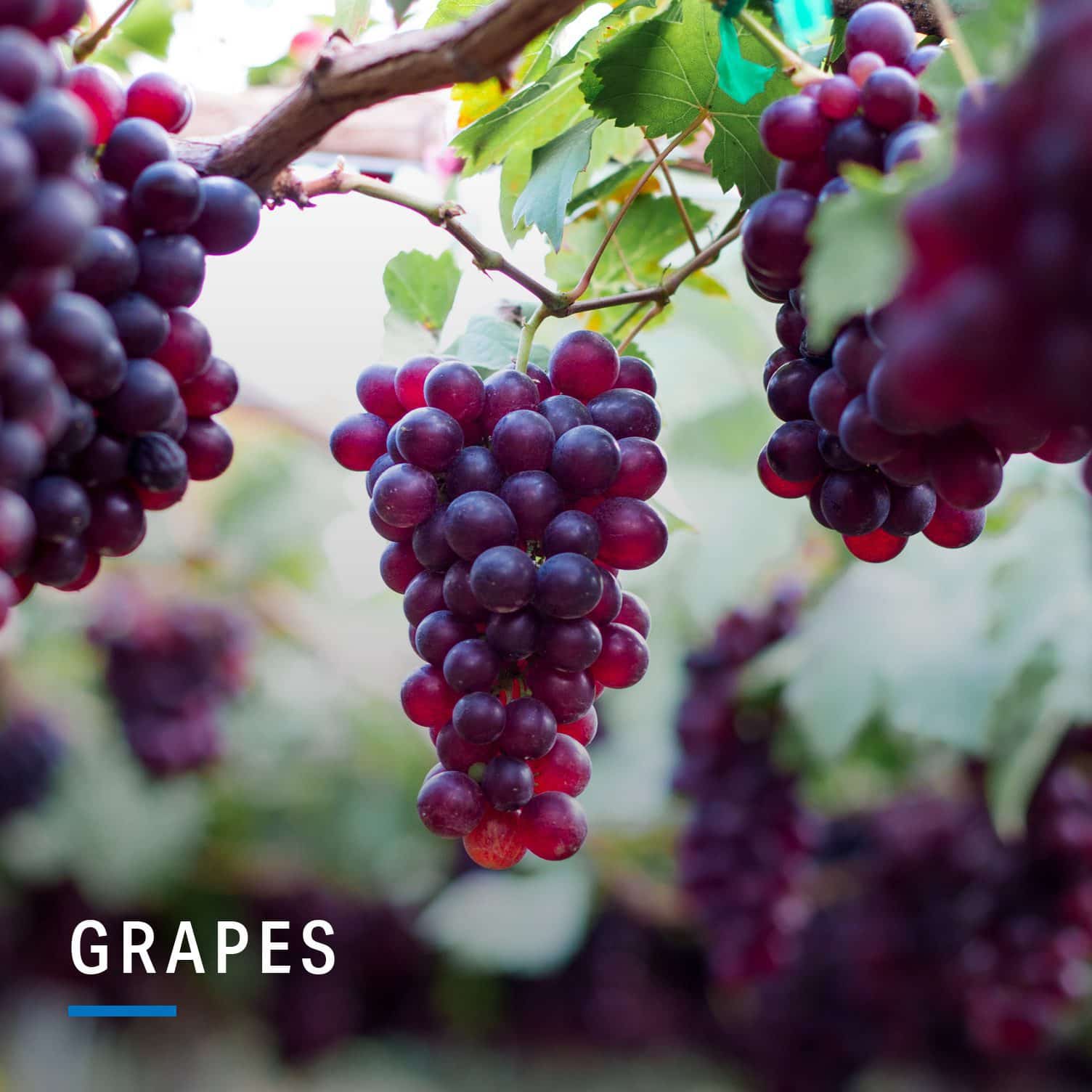
“I never met a grape I didn’t like,” says Bonci, who adds that they’re a great snack. “To do something different with grapes, try a Waldorf salad, with green and red grapes, goat cheese and walnuts or almonds.”
For the best tasting grapes, choose those that are firm, plump and still attached to their stems.
Nutrition: 1 cup of red or green grapes has about 100 calories, 27 grams of carbs and 1 gram of protein.
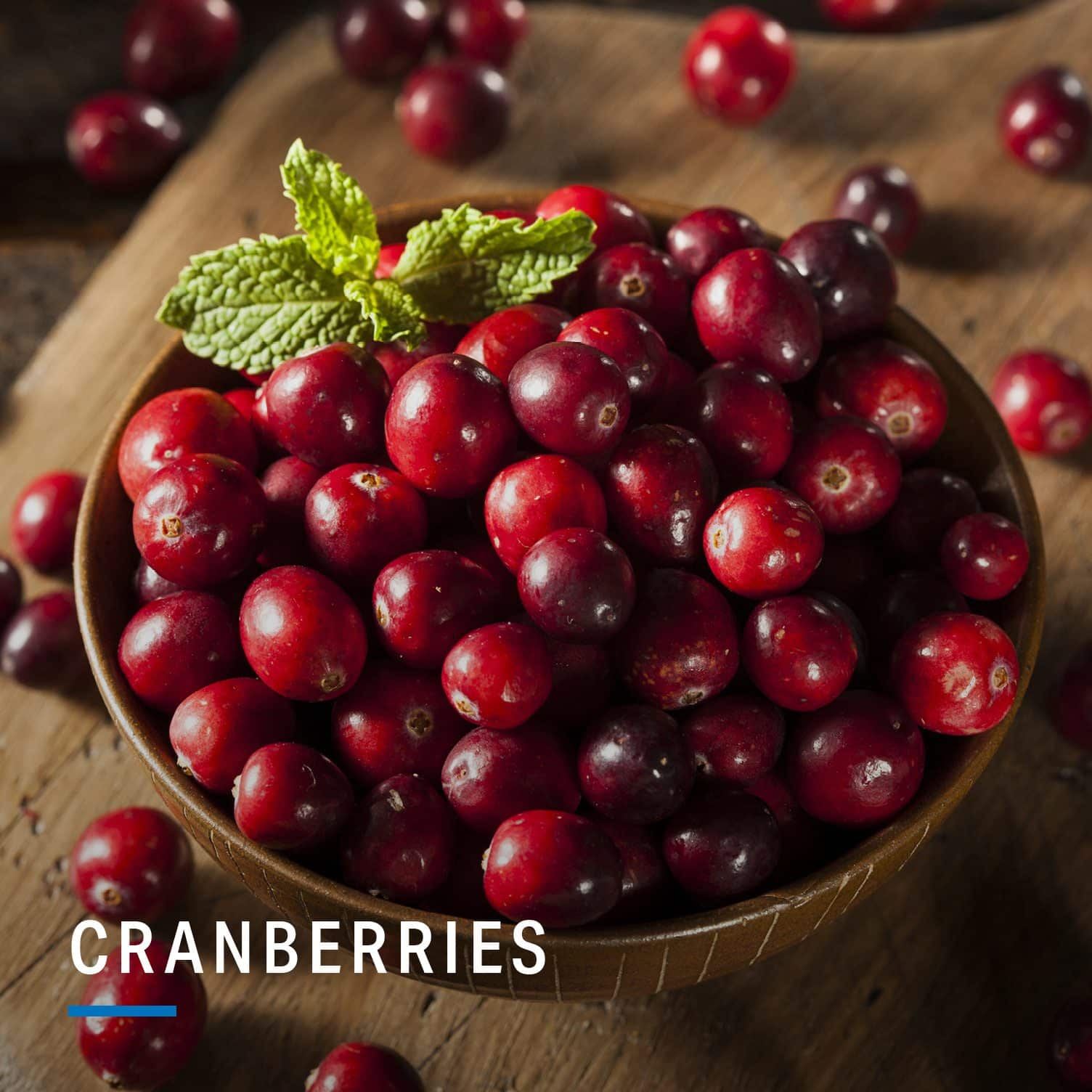
Cranberries are a fall staple, particularly during the holiday season when they show up in pies and salads. Dried cranberries are easy to use, though most contain added sugar, so look at the label before purchasing. Bonci likes making fresh cranberry relish, a tart and tasty dish with chopped cranberries, orange segments, fresh orange juice, orange zest and chopped pecans.
Choose cranberries that are dark red and firm. Avoid fruit that’s pale or squishy.
Nutrition: 1 cup of fresh cranberries has 46 calories and 12 grams of carbs.
FALL VEGETABLES
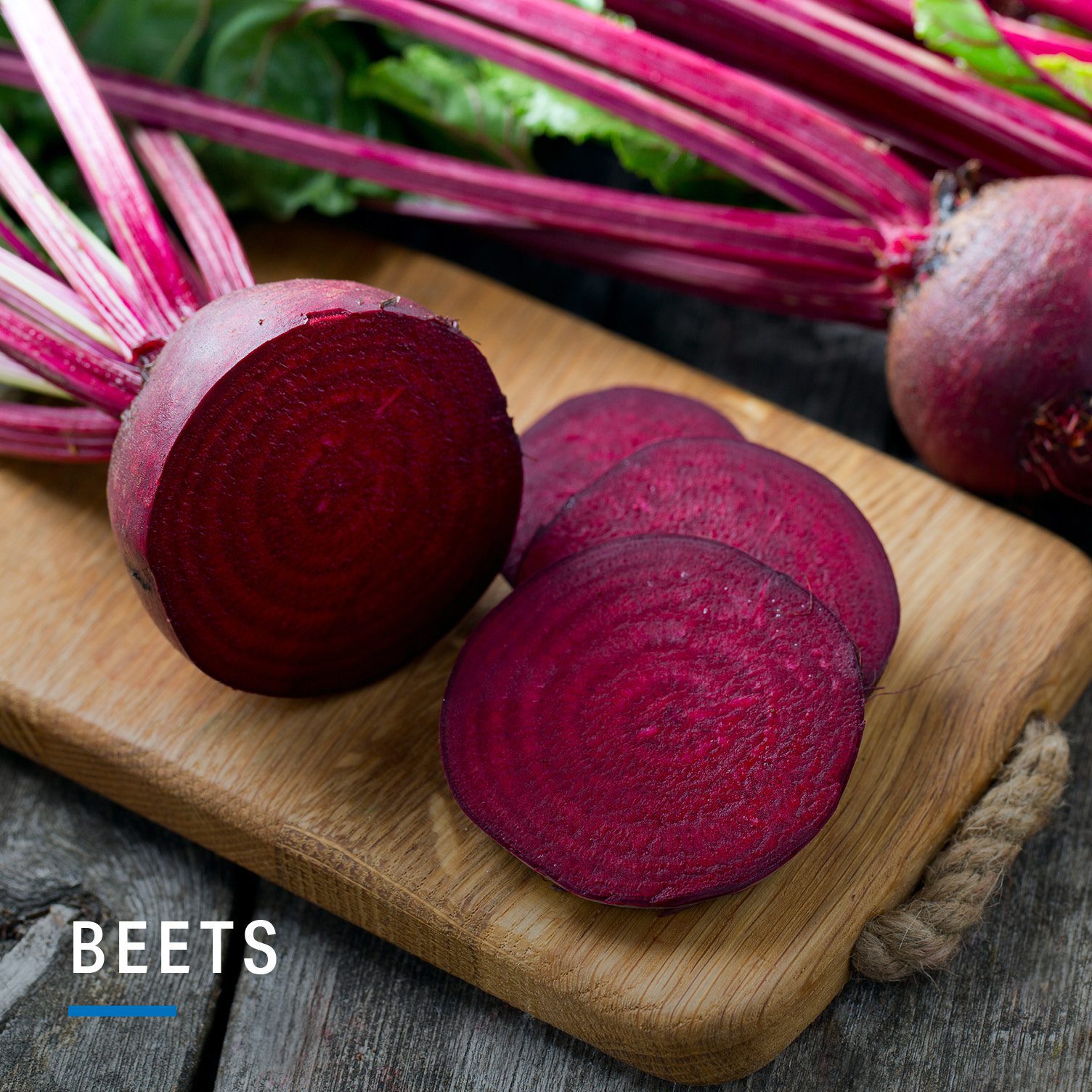
This colorful vegetable tastes great when roasted with a little olive oil, cinnamon and salt, but Bonci also likes shredding raw beets for salad and mixing them with arugula, grapefruit segments and a citrus vinaigrette.
Small-to-medium beets are typically more tender and flavorful than larger beets. Pick ones that feel dense for their size and have smooth, firm skin. The greens, if still attached, should be brightly colored and fresh, not wilted.
Nutrition: 1 cup of beets has 58 calories, 13 grams of carbs and 2 grams of protein.

“I never liked them as a kid, but once I tried them roasted, it was a game-changer,” says Bonci. She suggests making roasted Brussels sprouts with onions, prunes, salt, pepper, Italian seasoning and a squeeze of lemon juice.
The best Brussels sprouts are bright green with tightly layered leaves. Skip sprouts with yellow leaves, soft stems and visible blemishes.
Nutrition: 1 cup of Brussels sprouts has about 50 calories, 12 grams of carbs and 4 grams of protein.
CLICK TO TWEET THIS ARTICLE > Ten seasonal fruits and veggies to eat this fall via @myfitnesspal #myfitnesspal
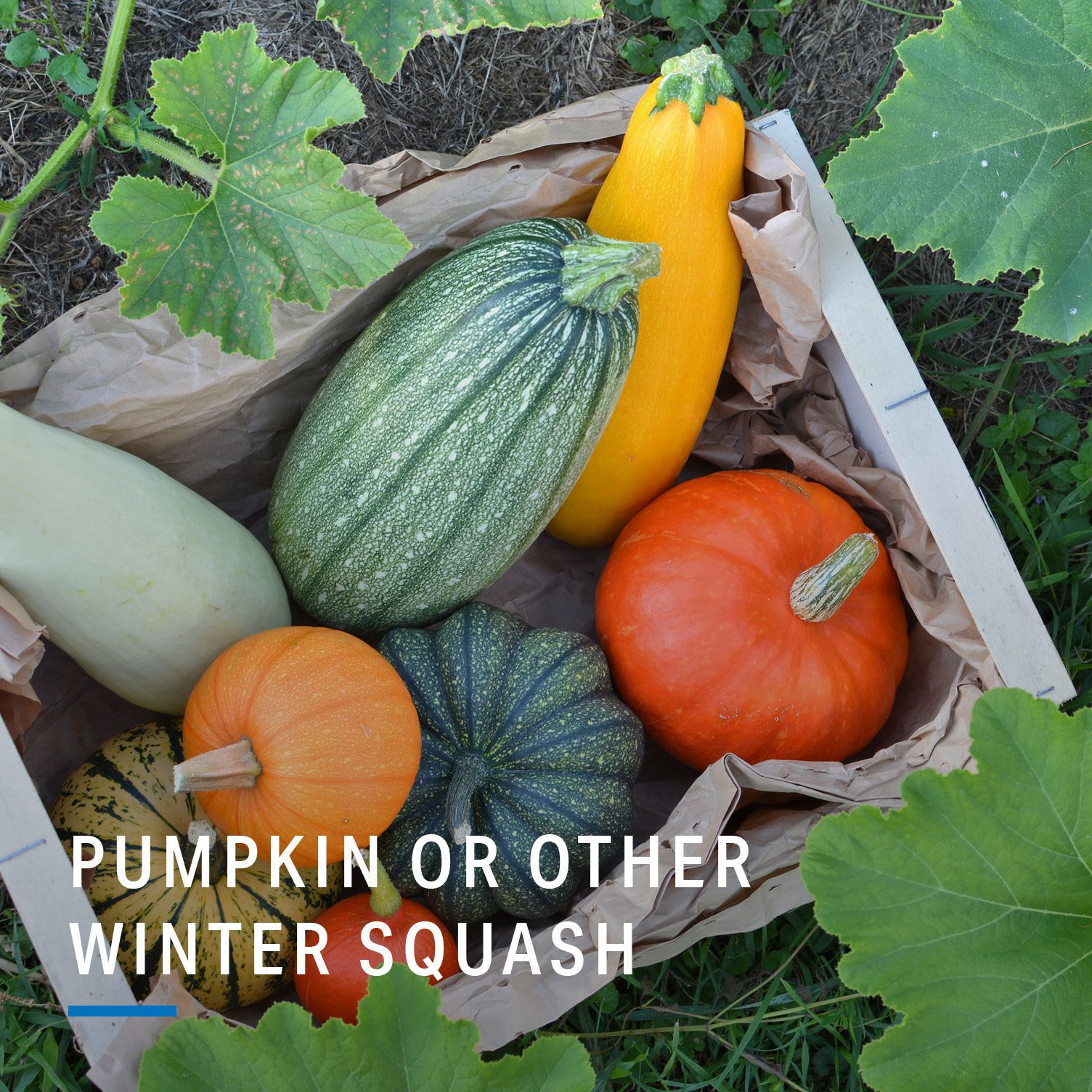
During the fall, Bonci likes to make squash soup, sautéing peeled squash with an onion and then adding broth. “Add a can of cannellini beans for creaminess and protein, and then season with turmeric, salt, pepper and cayenne pepper, and sprinkle roasted squash seeds on top.”
Select squash and pumpkins that are firm to the touch, with a portion of the stem still intact. They should be relatively uniform in color with no soft spots.
Nutrition: 1 cup of pumpkin has about 50 calories, 12 grams of carbs and 2 grams of protein.

Spinach is low in calories but packed with vitamins A, C and K, as well as folic acid and iron. “You can’t go wrong with a spinach salad,” says Bonci, but she also suggests sautéing spinach and leeks in olive oil with salt and pepper, or adding spinach and red peppers to a frittata.
Choose spinach that is dark green and fresh, with no signs of yellowing or wilting.
Nutrition: 1 cup of raw spinach has 6 calories and 1 gram of carbs.
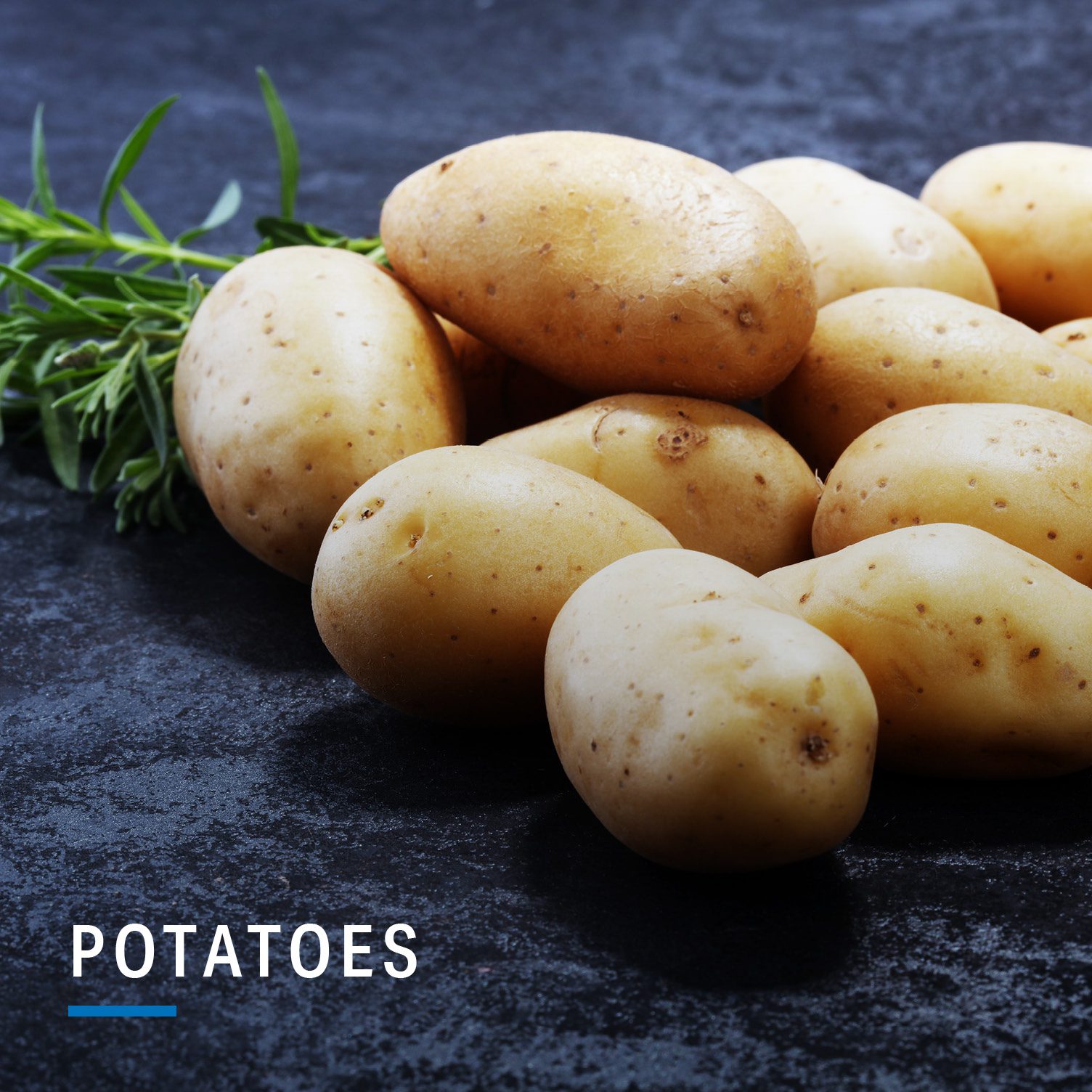
Potatoes come in a variety of sizes and colors, including red, purple and yellow, so your options are plentiful. For a quick and flavorful dish, Bonci likes tossing mini, multicolored potatoes in olive oil and either a powdered ranch dressing or Buffalo mix.
Pick out potatoes that are firm and smooth, with no signs of sprouting. Avoid those with cuts and blemishes.
Nutrition: 1 medium potato has about 110 calories, 26 grams of carbs and 3 grams of protein.
THE BOTTOM LINE
Fruits and vegetables are versatile foods that can be eaten raw or cooked. Experts recommend filling half your plate with produce, whether as a side dish or the star of the meal, and it’s smart to mix up those options for a varied dose of phytonutrients. Fall is a great time to visit your local grocer or farmers market to see what’s in season, eating fruits and vegetables at their peak of freshness and flavor.
Unlock an experience that’s like having a dietitian, trainer and coach — right at your fingertips. Go Premium for expert guidance and exclusive tools that will help you reach your personal health goals.




